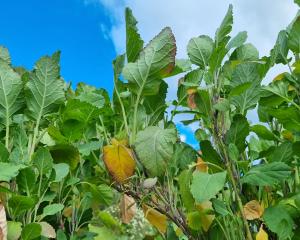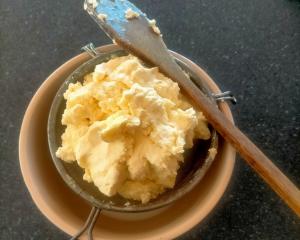

While researching the properties of various rongoa (native plant medicines), I noticed that horopito, aka pepper tree, has really strong anti-fungal properties, so I thought I would use myself as a guinea pig and try treating my nails with an ointment made from horopito, oil and beeswax. It is working. I’m not cured completely yet, but there has been a marked improvement and I think you do need to use it religiously for at least a year to get results.
I suspect that soaking your toes in a strong decoction made from horopito leaves might help athlete’s foot as well.
The anti-fungal properties of horopito got me thinking about using it against fungal infections on plants in the garden. In a not very scientific experiment I sprayed the white mildew on the leaves of my cucumber plants in the glasshouse last summer. Although it didn’t clear it completely, it certainly reduced the spread of the fungus to the new leaves and prolonged the life of the plant. I really think I am on to something here, but definitely more experiments with a control plant are needed.
FOR THE TOENAIL OINTMENT
Pick a really big handful of horopito leaves, dry them then crumble them in a blender so they have less volume.
Place the leaves in a bowl with some kind of vegetable oil. I use rice bran because it is relatively cheap, but you can use anything, it is only for toes after all.
Place the bowl over a pot of water and simmer for 10 minutes, then strain.
Place the infused oil back in the bowl over the pot of water and add a quantity of beeswax. I always guess the quantity (sorry, not very scientific again) but you want a fairly firm textured ointment so maybe a third of the volume of wax to oil?
Apply to affected toes at least once a day, but if you’re a star, twice a day. Put a sock over your foot if getting into bed after applying to stop smearing oil all over your sheets. Repeat, repeat, repeat ... until cured. You will notice a marked improvement compared to the pharmaceutical version, which does zilch.
PLANT SPRAY
For the horticultural spray grab two big handfuls of horopito leaves.
Place the leaves in a pot, cover with water and boil for 10 minutes.
Cool and strain the resultant liquid and spray on all surfaces of affected plants, including leaves with no fungal infection yet.
It does work and, at least, does no harm, which is more than can be said for many horticultural and human cures.
My toenails no longer look horticultural (like corn kernels), so all round it’s a good cure.
Hilary Rowley is a frugal, foraging foodie from Waitati. Each week in this column, one of a panel of writers addresses issues of sustainability.












